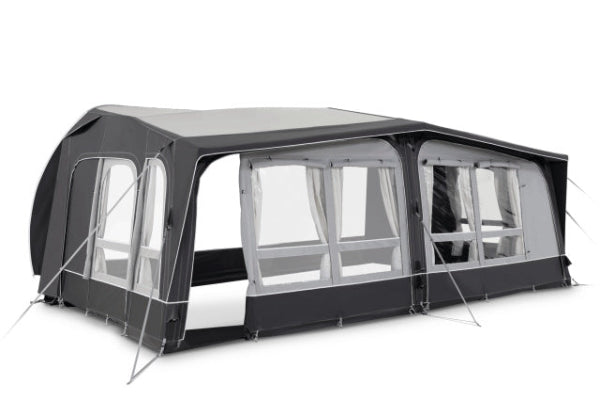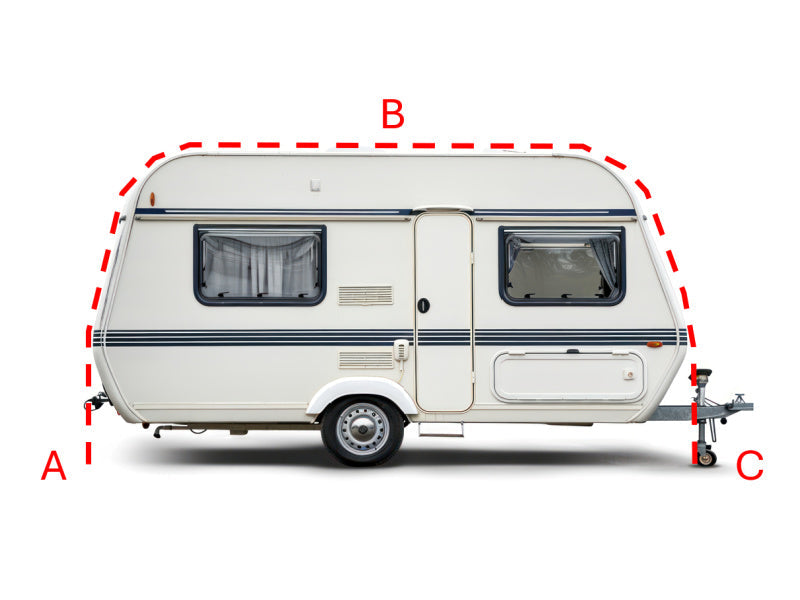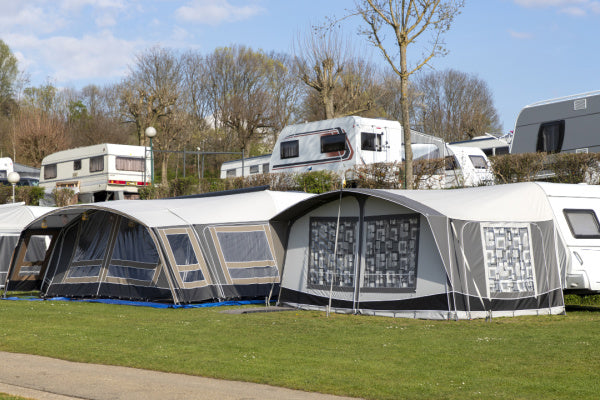Bell Tent Cost: A Comprehensive Breakdown
Thinking of glamping under the stars but unsure if your wallet’s ready? Bell tents and glamping tents can cost anywhere from £200 to over £700. Why the big range? Size, fabric, features, and brand all matter. Read on to avoid buyer’s regret—and soggy nights in a budget tent.
Key Factors Driving Bell Tent Prices
Size and Capacity: How diameter (e.g., 3m, 4m, 5m, 6m) impacts cost
The size and diameter of a bell tent make a noticeable difference in pricing. A 4-metre tent will generally cost less than a 6-metre one, simply because of the extra materials involved.
Larger tents also offer more usable space and greater headroom, which adds to both comfort and the final price tag.
Material Quality
The quality of material is a key part of what you're paying for. High-end fabrics perform better, last longer, and often look more refined.

100% Cotton Canvas (Higher cost, breathability, insulation, durability)
Full cotton canvas is the premium choice. It breathes well, insulates effectively, and tends to last for years with proper care.
However, its weight and higher cost may not suit all buyers.
Polycotton Canvas (Mid-range, blend of cotton & synthetic, lighter, faster drying)
Polycotton blends cotton with synthetic fibres. This gives you the benefits of breathability and durability, while keeping the weight and drying time down.
It’s a great balance for those seeking quality without the full price of cotton.
Synthetic (Polyester, Oxford cloth) (Lower cost, lighter, highly waterproof, less breathable)
Synthetic tents like polyester or Oxford cloth are often the cheapest options. They're lighter, dry fast, and resist water well.
However, they don’t breathe as well, which can lead to condensation on cooler nights.
Groundsheet Type: Zippable, sewn-in, heavy-duty PVC vs. lighter PE
The groundsheet setup can also influence the final cost.
Heavy-duty PVC sheets offer better durability and weather protection, while lighter PE groundsheets reduce weight and price.
Zippable or sewn-in designs also vary in terms of convenience and how easily you can clean or pack down your tent.
Added Features and Design: Stove jacks, multiple doors, mesh windows, integrated inner tents, unique shapes (e.g., Emperor, Star Bell)
Extra touches like stove jacks, double doors, mesh windows, or inner tents can all push the price higher.
Tents shaped like Star Bells or Emperors are often more expensive due to their unique design and more complex construction.
These additions, however, greatly enhance comfort and flexibility during your trip.
Brand Reputation and Manufacturing Quality: Premium brands vs. budget options
Some brands charge more because of their track record, customer service, or warranty coverage.
You may pay more upfront, but the tent is likely to last longer and perform better over time.
Budget brands may save you cash, but they can also cut corners in stitching, coating, or quality control.
Shipping Costs: (Often significant due to weight and bulk)
Shipping can be a hidden expense, especially for heavier canvas models.
Some sellers offer free delivery, but others charge a steep fee due to the size and weight of these tents.
Always check shipping costs before clicking “buy now”.
Bell Tent Price Ranges: What to Expect for Different Options
Typical Price Ranges by Size and Basic Type
Small Bell Tents (3m - 4m): (e.g., £200 - £400)
These compact options are ideal for solo campers or couples.
They’re typically made from basic materials like polyester or entry-level canvas and may include fewer features.
Assembly is usually simple, and the price makes them accessible for new campers.
Medium Bell Tents (5m): (e.g., £400 - £700)
A 5-metre tent is a sweet spot for many campers.
You’ll get more space, sturdier poles, and improved airflow features.
At this level, cotton or polycotton canvas becomes more common.
Large Bell Tents (6m - 8m+): (e.g., £900 - £2,500+)
Big tents come with a big price.
They're perfect for families, group glamping trips, or anyone needing more headroom and living space.
Expect upgraded materials, better ventilation, and possibly custom design options.

Budget-Friendly (Synthetic) vs. Premium (Cotton Canvas) Averages
Synthetic bell tents can start as low as £200 and still offer good weather resistance.
Cotton canvas models usually begin at £700 and climb well into the thousands depending on extras and branding.
The gap reflects long-term durability, insulation, and overall user experience.
Additional Costs: Accessories and Upgrades
Ground Tarps/Footprints
These protect the base of your tent and help extend its life.
Expect to pay around £30–£80 depending on size and material.
Inner Tents/Bedroom Compartments
These create privacy and improve warmth inside your bell tent.
Prices vary between £60–£200 depending on configuration.
Bell Tent Stoves and Flashing Kits
A wood-burning stove and flashing kit allow year-round use.
Complete setups generally start around £100 and can go up from there.
Awnings and Canopies
These provide extra shade or rain protection.
Expect to spend between £70 and £300+ based on size and fabric quality.
Specialised Flooring (Coir matting, rugs)
Adding flooring like coir matting or decorative rugs elevates the glamping experience.
These extras often range from £50–£250.
Repair Kits and Maintenance Products
Keep your tent in shape with seam sealers, waterproof sprays, and patch kits.
Most kits cost between £10–£50 and are worth the investment.
Is a Bell Tent Worth the Investment?
Understanding the Value Proposition
Longevity and Durability (Compared to cheaper synthetic tents)
Canvas tents are known for their lifespan and toughness.
Unlike many budget synthetics, they can handle wind, rain, and sun for years.
With care, a good bell tent becomes a long-term asset.
Comfort, Space, and Aesthetic Appeal
Bell tents look amazing and feel roomy.
They let in light, offer standing space, and feel more “homey” than dome tents.
If you’re after a relaxing or photogenic experience, they deliver.

Versatility for Various Uses (Camping, Glamping, Events)
Bell tents aren’t just for camping.
They’re often used at weddings, music festivals, yoga retreats, or even as guest rooms at home.
Their versatility makes them useful far beyond the campsite.
Resale Value (Well-maintained canvas tents can hold value)
Canvas tents with minimal wear often hold their value well.
It’s not uncommon to resell them for 60–80% of the original cost, especially if the brand is reputable.
Proper cleaning and storage go a long way here.
Tips for Finding the Best Bell Tent for Your Budget
Researching Different Brands and Retailers
Don’t just pick the first tent you see online.
Compare multiple brands, read user reviews, and explore return policies.
Looking for Sales, Discounts, and Bundles
Many retailers offer sales near the end of summer or around holiday weekends.
Subscribe to newsletters to catch early-bird deals or bundle discounts.
Considering Second-Hand Options
Used bell tents can be found on marketplaces or local forums.
Inspect them for mould, wear, or damaged zippers before buying.
Some excellent deals can be found this way.
Prioritising Features vs. Price for Your Needs
Make a checklist before shopping.
Which features are must-haves? Which are just nice to have?
This helps you get the best value without overpaying for extras you’ll never use.
Other content you might like:





Leave a comment